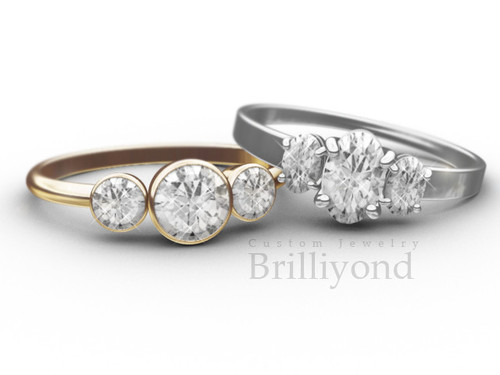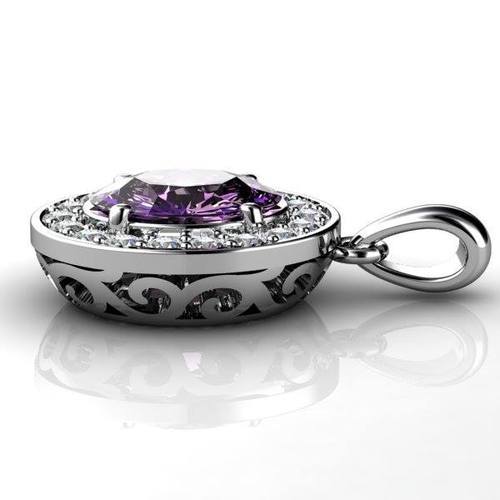Are you paying the right price for your jewellery?
Are you paying the right price for your jewellery purchase? This is an interesting question to answer. When it comes to jewellery, particularly the fine jewellery kind: that is jewels which command a high price owing to the materials that are used in them and their unique designs, many of us find it difficult to answer unless you happen to be a savant of the industry. Which, let’s face it, is not many of us. As a simple step, if you try searching the Internet for fine jewellery items, you will be surprised by how different the prices are. The variations vary considerably depending on the jewellery company, country of origin, location of the physical store, or the time of year. Most of us assume that the higher the price the better the jewellery. However, in the real world, things are not as simple. And today the majority of fine jewellery buyers do not know how to make a well-informed purchasing decision. In this post, we will look at five key factors which will enhance your buying skills.
1. Material cost
This is the central factor, which relates to the physical structure of the jewellery in question. For example, the 925 silver or sterling silver is the standard silver variant for jewellery: the silver alloy that contains 92.5% pure fine silver with the rest of it consisting of other metal types such as copper. The current market price of fine silver stands at around AUD $ 1.00 per gram. The price of a gram of gold stands at around AUD $ 84.84. These are important factors to consider. Particularly when it comes to high-priced materials like gold and platinum. In the case of gold, which varies based on the karat value, whilst there are no differences in the prices based on the specific metal colour which varies according to the popular white gold, the trendy rose gold and traditional yellow gold, or rose gold. In platinum, the price of the metal can vary according to the level of jewellery-grade metal’s purity. Notable here is the 950 part platinum, which indicates a 95 per cent purity. However, the differences between precious metals are also not always straightforward, notable here is the view that platinum is more valuable than gold, always. This is not always so.
When purchasing fine jewellery, which is invariably made with gold and platinum alloys, make it a point to ask your jeweller about the metal quality. Notable here is the marking on the metal such as the difference between 18Kvs 14K, as these will have an effect on the final price of the product. Which is followed by the weight of the item. This is especially important as certain online stores that do not feature the metal weight in relation to price, are not to be trusted. When buying fine jewels it is easy to get caught up in the beauty and value of gemstones, which is the item on our list. However, it is important to pay special attention to the material quality of the jewellery band, and its authenticity.

2. Stones
Not all gemstones are the same. Many of you may know the dominance of diamonds, followed by sapphires, emeralds and rubies. However, even in the same variety, gemstones will vary depending on the size and quality.
This takes us into the discussion on the geological character of the stone. This is a vast subject, and average buyers are generally at sea when it comes to this area, particularly when it comes to specific gemstone quality factors to be able to make a good judgment about a jewellery offer. To move forward, you can start by understanding the difference between authentic or natural gems from artificial or created gemstones. Many natural gemstones such as sapphire or ruby can be industrially created. They are known as created stones. Other gemstones which do not exist in nature but were invented by man are called synthetic gemstones. Cubic Zirconia (C/Z) and Sworoztky crystals are examples of them.
Created or Synthetic are generally cheaper compared to natural gemstones. So when purchasing a fine jewel it is important to inquire whether the gemstone is authentic or man-made, as this is a significant price and difference for the stone, if one controls of factors like purity, lustre, clarity etc. The next factor is the inner qualities of the stone, which will vary within their own ranges. This is especially important when it comes to coloured stones.
3. Design
Jewellery design is a complex factor to objectively measure. Good jewellery like designer engagement rings that usually come with a high price tag, tend to function as an indicator of quality for potential customers. But is that enough though? In most instances, it is fair to pay a premium for the right design, presuming that the high price alone is sufficient as an indicator of its higher value, in addition to its visually appealing character. The quality of the design comes down to its visual appeal for mass-market customers, who are just on the lookout for a quality engagement ring, that suits their style, and meets a minimum acceptable cost.
Big jewellery companies have built a reputation by became by consistently presenting good designs to customers. But this does not mean that every design which appears in their stores is a good one. The problem with style without substance is especially true when it comes to fine jewellery. Fine jewellery today is produced via a combination of digital designs, complex engineering, and modification. Thus the quality of the craftsmanship is an important factor to consider. Here the option to physically check the quality of the jewel, like a fine engagement ring, or having the benefit of post-sales and returns service is especially important. For even major jewellery companies can produce weak designs that can be sold on the strength of the brand name. Combined with the fact that even smaller fine jewellery companies are able to offer some of the top engagement ring designs in the industry. Be vigilant, ask questions, and feel free to look around, especially among smaller, online jewellers with strong information support.

4. Craftsmanship
Good jewellery design is built on good jewellery craftsmanship. Top-quality fine jewellery makers follow an extended and intricate process when it comes to developing their fine jewellery. At Brilliyond, for example, we employ advanced technologies such as CAD/CAM and casting, made possible by our in-house team of award-winning jewellery designers that can be made easily and cheaply. However good craftsmanship, the artistic placement of setting stones, and careful polishing and finishing require training and experience, and the capabilities to do so come at a cost. So jewellery products which benefit from these capabilities naturally feature a higher cost. So in an interesting twist, the price is a key factor. Not to confuse with the earlier, point, fine jewellery customers when buying high-quality jewellery must pay attention to the price. As it is an indicator of quality a suspiciously lower price for a fine ring with a large gemstone may be truly good to be true. Also, reputable jewellers offer ring customisation and modification services, which is a plus point to look for.
5. Do Your Due Diligence, Do not Buy on Sight
One of the main complaints of online jewellery buyers is that what they get is not what they saw when they made the purchase. Here it is important to read product reviews, view relevant photos or videos, and critically inquire about the production process and materials used in it. Besides all other reasons, you should love your jewellery to justify the price you pay. It is important to be taken in by looks alone. Jewellery is not an essential item. Don’t settle for less, but be careful in making your decision the first time.
Find stores that have a lot of varieties, customization options, or stores that sell unique pieces. Some stores provide a lot of images from different viewpoints so that you can get a good grasp of the design. But the majority of the stores are just limited to only one view, most often the front view. For example, the design details we can see from the side of this pendant cannot be visible from the front view alone. If the other views are absent, it is highly possible that such design details are also absent. Good designs look good from every angle. Seek out a fair price for the piece you choose and be willing to ask for a change to suit you.
As a rule of thumb, engagement rings should be priced at around 1200 – 1500 dollars at the starting range. This is usually for rings that feature coloured gemstones like smaller-carat sapphires, rubies and certain amethysts. Provide it is made of a precious metal like gold or platinum and has a diamond centre stone, the prices will start at around the 2200 dollar mark and go upwards depending on the carat and cut of the stone or stones. With other qualifying factors like design and special modification playing a part.
Final thoughts
Fine Jewellery is a collective symbol of art, prosperity, beauty, and due to its endurance even immortality. Pay a good price for the desired jewellery and get yourself enlightened. But remember, pay the right price, and this involves knowledge of your product, the jeweller who is providing it, and the pre and post-sale services. It is important to remember that jewellery companies both big and small can produce good, great and yes even mediocre designs in their collections. Thus it is up to the buyer to do the due diligence upfront and look out for companies that do invest in customer service, especially those who invest effort in educating their buyers on the specifics of their products.


Comments (3)
George
How much this ring really worth?
Sep 19, 2015Jim
Most of the jewellery in the market is overpriced. Reduculus amout of money is spent on branding and marketing. Customers have to pay their marketing cost as well.
Jan 05, 2017Melanie Curtis
This explains a lot why jewelleries are so damn expensive this days.
Mar 29, 2017Write your review